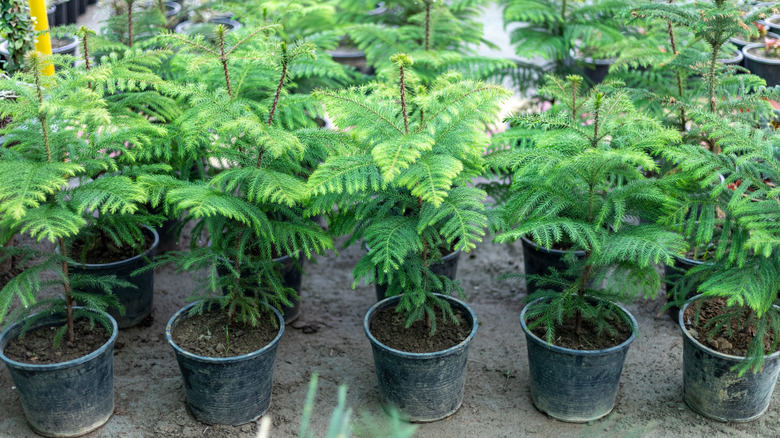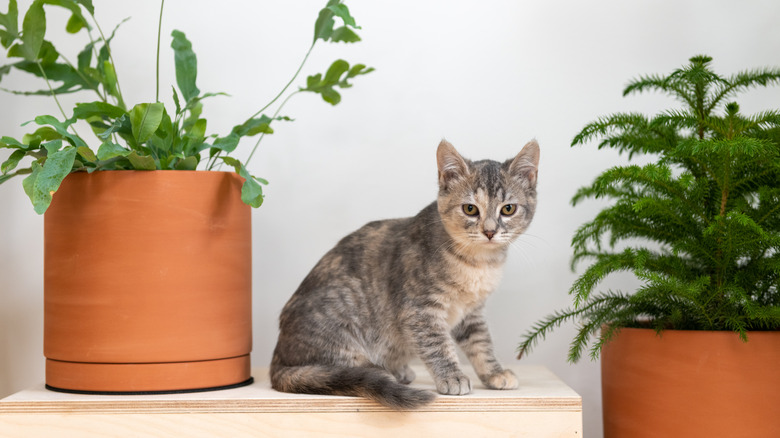What To Look Out For When Picking Out A Norfolk Island Pine Tree
Norfolk Island pine trees, scientifically known as Araucaria heterophylla, have become increasingly popular as indoor plants, adorning homes with their elegant, evergreen presence. Native to Norfolk Island in the South Pacific, these trees have adapted well to indoor environments, making them a favorite choice among plant enthusiasts. Their feathery, symmetrical branches give them a distinct charm, resembling a small, well-behaved Christmas tree throughout the year. However, not all Norfolk pines are created equal, and it's crucial to understand what attributes to look for when bringing one into your home.
What sets Norfolk pines apart is their resilience and adaptability to indoor conditions. They thrive in full or bright indirect light and are relatively low-maintenance, making them an ideal choice for beginners and seasoned plant cultivators. Although the Norfolk pine is technically not a pine tree and is more closely related to a conifer called the monkey puzzle tree, its popular name has stuck, and it continues to be a highly sought-after indoor plant. But before you head out to purchase your own Norfolk Island pine, it's best to know the specific characteristics that define a healthy specimen so you can easily navigate the pitfalls that sometimes accompany these plants.
Features to look out for and red flags
When selecting a Norfolk pine, meticulous examination is paramount. A healthy specimen boasts a symmetrical form, with branches evenly distributed around the trunk, creating a visually pleasing outcome. However, it is not uncommon for Norfolk Island pine growers and sellers like Costa Farms to put multiple cuttings in one pot to achieve a lush display, as these plants take years to grow.
The needles should exhibit a robust, deep green color, signaling vitality. Be wary of any dry, brittle, brown, or yellowing needles, as these can indicate stress, improper care, or disease. Inspect the lower branches and inner foliage. Some unscrupulous sellers may strategically place healthy branches to camouflage potential issues. Look for consistent coloration throughout the tree, ensuring the vibrancy extends to the innermost branches.
One alarming practice to be aware of is painting Norfolk pines to create a false appearance of lushness. Some sellers resort to this deceptive technique to mask imperfections or to make a plant look fuller than it is. Scrutinize the plant carefully; if the greenery appears unnaturally uniform or overly vibrant, it may be a result of such artificial enhancements. Inspect the trunk and undersides of branches to reveal any traces of paint.
Caring for your Norfolk pine indoors
Attention to detail is vital in ensuring your Norfolk pine thrives indoors. Place your tree in a location with bright, indirect sunlight, and avoid sudden temperature changes. Water the plant thoroughly about once a week, allowing the top inch of soil to dry between watering sessions. Norfolk pines prefer slightly higher humidity, so consider misting the foliage during dry periods or placing a tray of water near the tree.
During the spring and summer, nourish your Norfolk pine every two to four weeks with a balanced, water-soluble fertilizer — preferably one intended for indoor plant use or formulated for tropical foliage. Prune sparingly to maintain its shape, removing any unhealthy or dead branches. Keep an eye out for pests such as spider mites, especially if the air in your home is too dry. By understanding the nuances of Norfolk pine care and selecting a healthy plant from the start, you'll enjoy the beauty of this evergreen companion for years to come.


